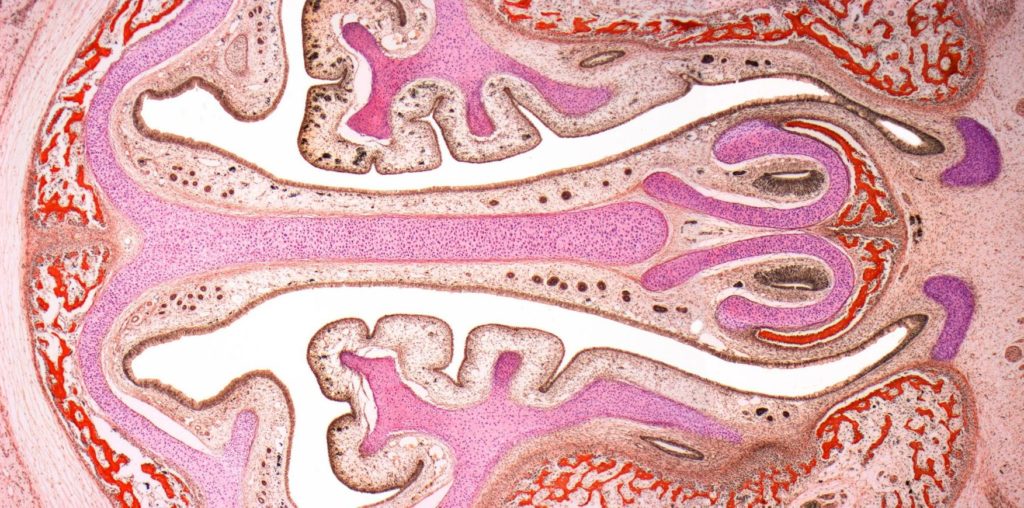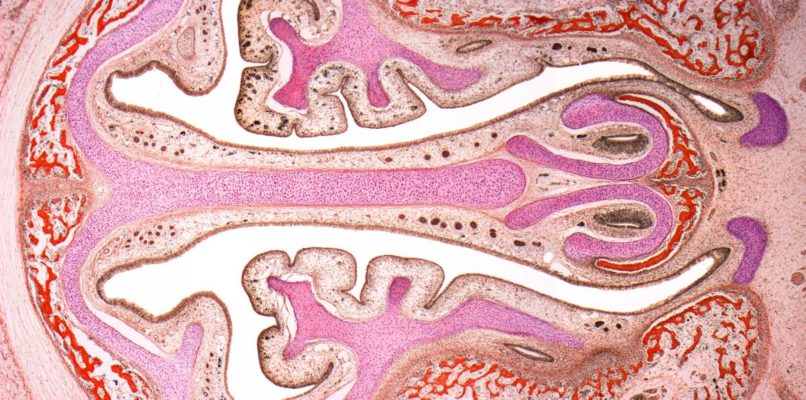
A research team led by scientists at the University of Illinois Urbana-Champaign (UIUC) tracked the rise and fall of SARS-CoV-2 (the virus that caused COVID-19) in the saliva and nasal cavities of people newly infected with the virus. The study was the first to follow acute COVID-19 infections over time through repeated sampling and to compare results from different testing methodologies.
The findings were reported in the journal Nature Microbiology.
“We capture the most complete, high-resolution, quantitative picture of how SARS-CoV-2 replicates and sheds in people during natural infection. There are no other data like this,” said U. of I. microbiology professor Christopher B. Brooke, who led the research with microbiology and statistics professor Pamela P. Martinez and pathobiology professor Rebecca L. Smith. “The study sheds light on several aspects of infection that were poorly understood, that are important for both public health purposes as well as just fundamental biology.”
The study grew out of the SHIELD: Target, Test, Tell initiative, the U. of I.’s COVID-19 response program, which began testing staff, students and faculty members twice per week in fall 2020. Illinois researchers realized that the testing data could be a treasure trove of information about the course of infection: for example, how fast different SARS-CoV-2 variants replicated, and how individuals differed in their ability to clear the infection. The team received Institutional Review Board approval to pursue such a study.
The National Institutes of Health stepped in to fund the effort to compare PCR tests, which amplify and detect viral RNA, with rapid antigen tests, which look for proteins associated with the virus. This funding made other aspects of the study possible.
Starting within 24 hours of an initial positive test, the team took daily nasal and saliva samples from adults who tested positive for COVID-19 infection. The 60 participants in the study ranged from 19 to 73 years old. The study followed each person up to 14 days.
Determining how long infected individuals may be shedding viable virus – in their saliva or nasal passages, for example – is key to understanding how the virus spreads and persists in a population, Brooke said. To do this, the team also used viral culture assays to measure the shedding of infectious virus in their samples.
“Just because you see a signal of virus by PCR or antigen tests doesn’t mean that there’s actually live virus there that could replicate and shed and transmit to someone else,” Brooke said.
Ruian Ke, a collaborator at Los Alamos National Laboratory and first author of the paper, used a variety of mathematical models to help the team understand how the data may reflect underlying infection processes and identify factors influencing the course of infection.
The effort revealed that some individuals were shedding live virus for only a day or two, while others continued to shed the virus for up to nine days.
“Based on that finding, we predict that those people who are shedding virus for more than a week are going to be a much greater risk of transmission than someone who only has live virus detectable for a day or two,” Brooke said.
“This is a very key finding,” Martinez said. “People have observed that viral transmission is heterogenous, but most attribute those differences to individual behavior. We assume that superspreaders are less cautious or are in contact with more people. This shows that intrinsic infection dynamics also play an important role.”
The researchers also discovered that viral genome loads – detectable with PCR technology – peaked much earlier in saliva samples than in nasal swabs.
This suggests “that saliva may serve as a superior sampling site for early detection of infection,” the researchers wrote.
The scientists saw no meaningful differences in the infection dynamics of early circulating variants of the SARS-CoV-2 virus and the alpha variant. This indicates that the alpha variant’s higher transmissibility “cannot be explained by higher viral loads or delayed clearance,” the researchers wrote.
The team saw no meaningful correlations between people’s symptoms and the course of infection. While it is often assumed that those who have more symptoms are likely to be more infectious, that may not always hold true, Brooke said. The implications of this part of the research may be limited, however, by the fact that all the participants in the study were either asymptomatic or had mild symptoms and none were hospitalized.
“Overall, this study helps explain why some people are more likely to transmit SARS-CoV-2 than others,” Brooke said.
Reference: “Daily longitudinal sampling of SARS-CoV-2 infection reveals substantial heterogeneity in infectiousness” by Ruian Ke, Pamela P. Martinez, Rebecca L. Smith, Laura L. Gibson, Agha Mirza, Madison Conte, Nicholas Gallagher, Chun Huai Luo, Junko Jarrett, Ruifeng Zhou, Abigail Conte, Tongyu Liu, Mireille Farjo, Kimberly K. O. Walden, Gloria Rendon, Christopher J. Fields, Leyi Wang, Richard Fredrickson, Darci C. Edmonson, Melinda E. Baughman, Karen K. Chiu, Hannah Choi, Kevin R. Scardina, Shannon Bradley, Stacy L. Gloss, Crystal Reinhart, Jagadeesh Yedetore, Jessica Quicksall, Alyssa N. Owens, John Broach, Bruce Barton, Peter Lazar, William J. Heetderks, Matthew L. Robinson, Heba H. Mostafa, Yukari C. Manabe, Andrew Pekosz, David D. McManus and Christopher B. Brooke, 28 April 2022, Nature Microbiology.
DOI: 10.1038/s41564-022-01105-z
Brooke, Martinez and Smith are affiliates of the Carl R. Woese Institute for Genomic Biology at the U. of I. Smith also is a faculty member in the Carle Illinois College of Medicine at Illinois.
The National Heart, Lung, and Blood Institute at the National Institutes of Health supported this research.

Leave a Reply
You must be logged in to post a comment.